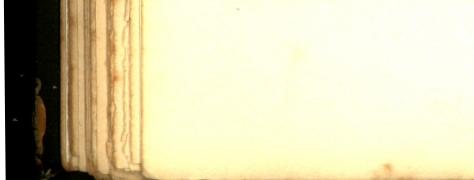40 DOGS AND ALL ABOUT THEM
shows, nearly half a century prior to the discussion, a white and black dog, typical in nearly every respect, except colour, of the black Newfoundland. There is no appearance of cross-breeding in Landseer's dog ; on the contrary, he reveals all the characteristics of a thoroughbred. Seventy years ago, therefore, the white and black variety may be fairly considered to have been established, and it is worthy of mention here that " Idstone " quoted an article written in 1819 stating that back in the eighteenth century Newfoundlands were large, rough-coated, liver and white dogs. It is clear, also, that in 1832 Newfoundlands in British North America were of various colours. Additional evidence, too, is provided, in the fact that when selecting the type of head for their postage stamp the Government of Newfoundland chose the Landseer dog. Therefore, there are very strong arguments against the claim that the true variety is essentially black.
However that may be, there are now two established varieties, the black and the white and black. There are also bronze-coloured dogs, but they are rare and are not favoured. It is stated, however, that puppies of that colour are generally the most promising in all other respects.
The black variety of the Newfoundland is essentially black in colour ; but this does not mean that there may be no other colour, for most black Newfoundlands have some white marks, and these are not considered objectionable, so long as they are limited to white hairs on the chest, toes, or the tip of the tail. In fact, a white marking on the chest is said to be typical of the true breed. Any white on the head or body would place the dog in the other than black variety. The black colour should preferably be of a dull jet appearance which approximates to brown. In the other than black class, there may be black and tan, bronze, and white and black. The latter predominates, and in this colour, beauty of marking is very important. The head should be black with a white muzzle and blaze, and the body and legs should
be white with large patches of black on the saddle and quarters, with possibly other small black spots on the body and legs.
Apart from colour, the varieties should conform to the same standard. The head should be broad and massive, but in no sense heavy in appearance. The muzzle should be short, square, and clean cut, eyes rather wide apart, deep set, dark and small, not showing any haw ; ears small, with close side carriage, covered with fine short hair (there should be no fringe to the ears), expression full of intelligence, dignity, and kindness.
The body should be long, square, and massive, loins strong and well filled ; chest deep and broad ; legs quite straight, somewhat short in proportion to the length of the body, and powerful, with round bone well covered with muscle ; feet large, round, and close. The tail should be only long enough to reach just below the hocks, free from kink, and never curled over the back. The quality of the coat is very important ; the coat should be very dense, with plenty of undercoat ; the outer coat somewhat harsh and quite straight. A curly coat is very objectionable. A dog with a good coat may be in the water for a considerable time without getting wet on the skin.
The appearance generally should indicate a dog of great strength, and very active for his build and size, moving freely with the body swung loosely between the legs, which gives a slight roll in gait. This has been compared to a sailor's roll, and is typical of the breed.
As regards size, the Newfoundland Club standard gives 140 lbs. to 120 lbs. weight for a dog, and 110 lbs. to 120 lbs. for a bitch, with an average height at the shoulder of 27 inches and 25 inches respectively ; but it is doubtful whether dogs in proper condition do conform to both requirements. At any rate, the writer is unable to trace any prominent Newfoundlands which do, and it would be safe to assume that for dogs of the weights specified, the height should be quite 29 inches for dogs, and 27 inches for bitches. A dog weighing
THE NEWFOUNDLAND
41

